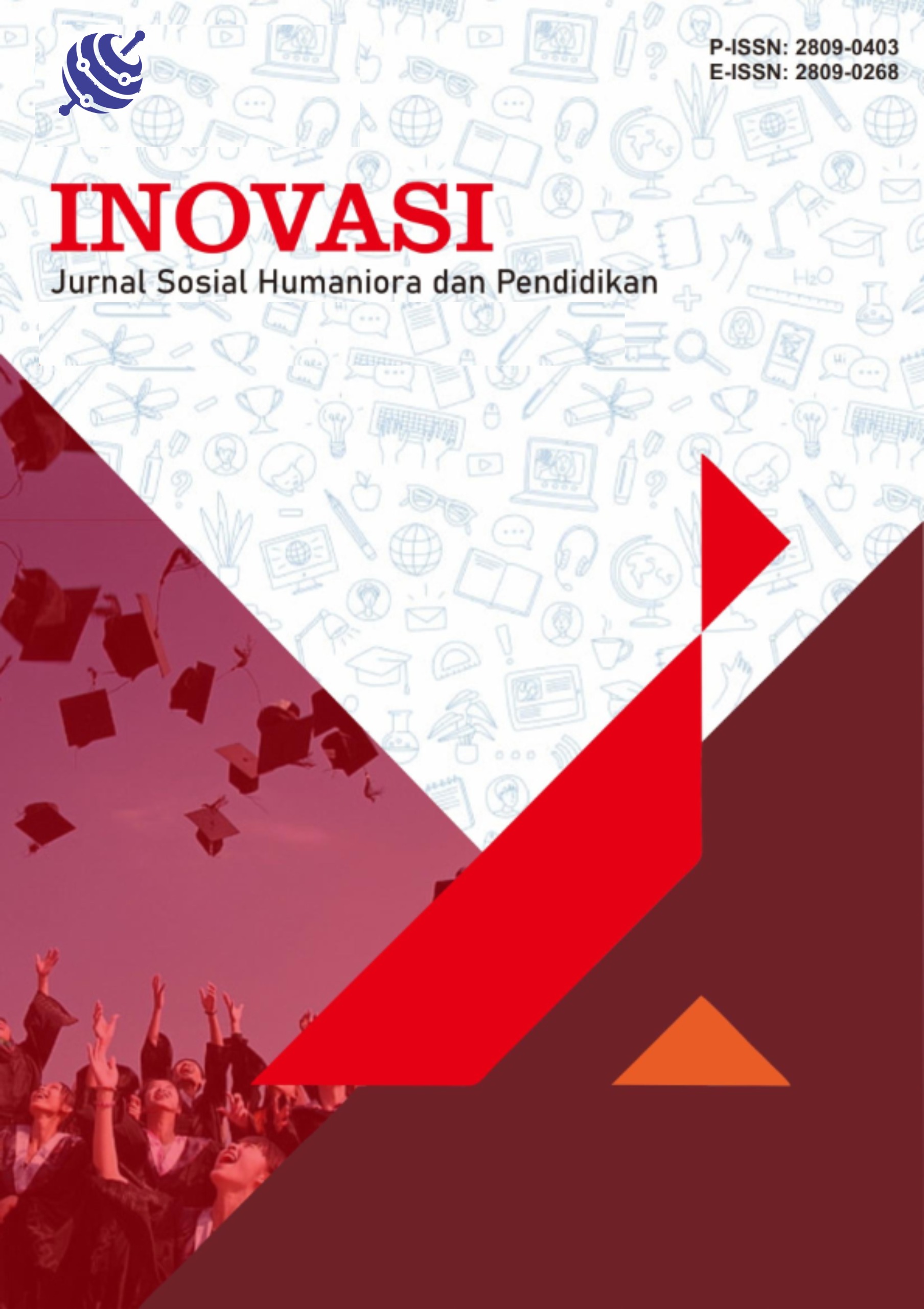E-Assessment Integration in Dance Practice Evaluation : A Case Study in “Merdeka Belajar-Kampus Merdeka” (MBKM)
DOI:
https://doi.org/10.55606/inovasi.v4i2.3987Keywords:
e-assessmen, assessment, evaluations, MBKM, danceAbstract
Technological advancement profoundly impacts civilizations, cultures, and educational paradigms, ushering in a new era of innovation and change. As technology becomes deeply ingrained in our daily lives, educational practices must adapt, necessitating creative approaches to learning and assessment for sustainable educational progress. E-assessment emerges as a groundbreaking online-based assessment system poised to tackle the complexities inherent in initiatives like Merdeka Belajar-Kampus Merdeka (MBKM). By embracing e-assessment, educational institutions can customize assessments to suit the unique requirements of MBKM, ensuring seamless integration and alignment with its core objectives. The reliability of e-assessment enables evaluations to occur at any time, from anywhere, by multiple assessors, fostering inclusivity and collaborative learning environments. However, like any innovation, e-assessment presents its own set of challenges. Users must possess adequate digital literacy and access to necessary resources to fully exploit its potential. This collaborative approach not only resonates with the ethos of MBKM but also bolsters its ability to deliver comprehensive and collaborative dance education. In conclusion, the incorporation of e-assessment into dance practice evaluation underscores the transformative potential of technology in education, demonstrating how innovative solutions can enhance educational experiences and empower learners in the digital era.
References
Andrade, H. G., & Boulay, B. A. (2003). Role of rubric-referenced self-assessment in learning to write. Journal of Educational Research. https://doi.org/10.1080/00220670309596625
Ashton, H. S., & Thomas, R. (2006). Bridging the Gap Between Assessment, Teaching and Learning. Proceedings of the 10th CAA International Computer Assisted Assessment Conference.
Beevers, C. G., Clasen, P., Stice, E., & Schnyer, D. (2010). Depression symptoms and cognitive control of emotion cues: A functional magnetic resonance imaging study. Neuroscience. https://doi.org/10.1016/j.neuroscience.2010.01.047
Crews, T. B., & Curtis, D. F. (2011). Online Course Evaluations: Faculty Perspective and Strategies for Improved Response Rates. Assessment and Evaluation in Higher Education. https://doi.org/10.1080/02602938.2010.493970
Denise, W. (2014). Computer Assisted Assessment. Research into E-Assessment. In Communications in Computer and Information Science.
Donovan, J., Mader, C., & Shinsky, J. (2007). Online vs. traditional course evaluation formats: Student perceptions. Journal of Interactive Online Learning.
Gipps, C. V. (2005). What is the role for ICT-based assessment in universities? Studies in Higher Education. https://doi.org/10.1080/03075070500043176
Gisev, N., Bell, J. S., & Chen, T. F. (2013). Interrater agreement and interrater reliability: key concepts, approaches, and applications. Research in Social and Administrative Pharmacy, 9(3), 330–338.
Goodrich Andrade, H. (2000). Using Rubrics to Promote Thinking and Learning. Educational Leadership.
Ihantola, P., Ahoniemi, T., Karavirta, V., & Seppälä, O. (2010). Review of recent systems for automatic assessment of programming assignments. Proceedings of the 10th Koli Calling International Conference on Computing Education Research, Koli Calling’10. https://doi.org/10.1145/1930464.1930480
Llamas-Nistal, M., Fernández-Iglesias, M. J., González-Tato, J., & Mikic-Fonte, F. A. (2013). Blended e-assessment: Migrating classical exams to the digital world. Computers and Education. https://doi.org/10.1016/j.compedu.2012.10.021
MacKenzie, D. (2003). Assessment for e-learning: What are the features of an ideal e-assessment system. Proceedings of the 7th CAA Conference, 8–9.
Marriott, P. (2009). Students’ evaluation of the use of online summative assessment on an undergraduate financial accounting module. British Journal of Educational Technology. https://doi.org/10.1111/j.1467-8535.2008.00924.x
Miller, C., Hooper, S., Rose, S., & Montalto-Rook, M. (2008). Transforming e-assessment in American Sign Language: Pedagogical and technological enhancements in online language learning and performance assessment. Learning, Media and Technology. https://doi.org/10.1080/17439880802323980
Osuji, U. S. A. (2012). The use of e-assessments in the Nigerian higher education system. Turkish Online Journal of Distance Education. https://doi.org/10.17718/tojde.25466
Perrotta, C., & Whitelock, D. (2017). Assessment for learning. In Technology Enhanced Learning: Research Themes. https://doi.org/10.1007/978-3-319-02600-8_12
Ridgway, J., McCusker, S., & Pead, D. (2009). Literature Review of E-assessment. Journal Of Distance Education.
Siregar, N., Sahirah, R., & Harahap, A. A. (2020). Konsep kampus merdeka belajar di era revolusi industri 4.0. Fitrah: Journal of Islamic Education, 1(1), 141–157.
Sorensen, E. (2013). Implementation and student perceptions of e-assessment in a Chemical Engineering module. European Journal of Engineering Education. https://doi.org/10.1080/03043797.2012.760533
Tohir, M. (2020). Merdeka Belajar: Kampus Merdeka.
Triana, D. D. (2020). Penilaian Kelas dalam Pembelajaran Tari. CV. Jakad Media Publishing.
Triana, D. D., & Juniasih, I. (2019). IT-Based Movement Evaluation System in Dance Studios. https://doi.org/10.2991/icade-18.2019.52
Warburton, B., & Conole, G. (2005). Whither E-assessment?
Williams, J. B., & Wong, A. (2009). The efficacy of final examinations: A comparative study of closed-book, invigilated exams and open-book, open-web exams. British Journal of Educational Technology. https://doi.org/10.1111/j.1467-8535.2008.00929.x
Downloads
Published
How to Cite
Issue
Section
License
Copyright (c) 2025 Jurnal Sosial Humaniora dan Pendidikan

This work is licensed under a Creative Commons Attribution-ShareAlike 4.0 International License.







